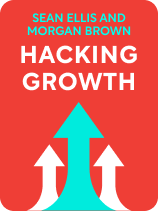

This article is an excerpt from the Shortform book guide to "Hacking Growth" by Sean Ellis and Morgan Brown. Shortform has the world's best summaries and analyses of books you should be reading.
Like this article? Sign up for a free trial here.
What is growth hacking? What is the secret to achieving exponential business growth?
Growth hacking is the only growth strategy that will keep your business competitive in the modern marketplace. Growth hacking is premised on continuous and rigorous testing to find hacks—practices that have the potential to skyrocket your company’s growth.
Keep reading to learn about the growth hacking method.
The Growth Hacking Method
In today’s fast-paced, high-tech world, old approaches to marketing no longer work. Large-scale, big-budget advertising campaigns are too slow and imprecise for the online world. Better by far is to use growth hacking, the authors’ cutting-edge strategy for optimizing your business and skyrocketing its growth.
What is growth hacking? The basic process of growth hacking is to rapidly analyze your product, generate ideas for growth hacks, select the best ideas, experiment with them (in that order), and repeat. This allows you to learn about your product and your users, quickly find changes that work, and stay flexible as you develop your business. In addition, growth hacking thrives on creative solutions to tough problems—so don’t be afraid to think outside the box.
By testing rapidly, growth hacking compounds many small wins to achieve huge successes. This is much like compound interest, where a small sum of money incrementally becomes much larger.
Decide on an initial tempo of experimentation to shoot for, then ramp up over time as the process becomes second nature. The authors recommend starting with at least two tests each week, which your team will determine during the weekly meetings you’ll hold.
| Growth Hacking and Agile Software Development Early in the book, the authors compare their methodology to agile software development, a popular development philosophy that focuses on making small, incremental changes that build up to a larger product. Much like growth hacking, agile software development allows teams to stay flexible, adapt on the fly, and make steady, measurable progress. The authors’ notion of conducting weekly, high-tempo testing might be inspired by Scrum, a popular agile methodology that uses “sprints,” periods of fast-paced work that last for between two weeks and a month. Whether you’re growth hacking or using agile development strategies, think of your weekly or monthly sprints as the basic container for the rest of your efforts. Meetings, collaborations, and everyone’s individual work should contribute to running successful, focused sprints. |
Step #1: Generate Insights
To start, the growth lead and data analyst should dive into your data to look for user patterns, which will give you insights (knowledge about how your users use your product or service). According to the authors, this is how you find opportunities to tweak your product and create growth. Pay attention to things such as where you typically lose customers in your marketing process (your sales funnel), how long they spend on each page, and the “open rates” for marketing emails.
At the same time, have your marketer conduct user surveys to gather information about user demographics and other distinguishing characteristics, such as shopping habits or favorite devices. If you can match user behaviors to demographic patterns, you can target tests on specific segments of your user base.
(Shortform note: In addition to generating customer insights, some advocate using predictive behavior modeling. This is a technique that involves building statistical models of the likely future actions your customers will take based on data you’ve gathered about their past actions. Note that while this can be highly effective—increasing sales, retention, and income—it’s also a feature of surveillance capitalism, according to Shoshana Zuboff. In The Age of Surveillance Capitalism, she argues that predicting customer behaviors in order to target them with better marketing isn’t an ethical practice.)
Step #2: Gather Ideas
According to the authors, growth hacking depends on a steady flow of ideas—without them, you won’t have any tests to run. To gather ideas, set up project management software that allows your whole team to create and submit ideas. Then, encourage constant brainstorming and idea submission. Let your team know that anything goes and all ideas are worth considering, no matter how crazy sounding. Highly resourceful ideas have rocketed many companies upward in growth—for instance, Dollar Shave Club made a ridiculous marketing video that went viral and gained them over 12,000 new customers in just two days.
Have every idea follow a template: a statement of the idea, a brief summary of reasoning, and a hypothesis. Each idea should target a key metric, and it should propose a specific, actionable change that can be measured.
(Shortform note: To improve your ability to generate ideas, try setting a goal to come up with a certain number of ideas each week. Track your progress using a spreadsheet or similar tool, and measure from week to week. Once you can consistently meet that goal, set it a bit higher, repeating until you get to the level you’d like to maintain. You can also have each member of your growth team do the same, until each member meets a level of idea-output that’s sufficient to maintain your group’s testing tempo.)
Step #3: Determine the Best Ideas
Each team member should score their own ideas before they submit them. The authors recommend using their ICE criteria: Impact, Confidence, Ease. Impact is the idea’s potential to produce big change. Confidence is how certain the team member is of success, and Ease is how hard it’ll be to implement the test. Don’t get hung up on the subjectivity of these scores—the rating is meant to be a general guide, not a definitive score.
Before your weekly meeting, have team members nominate three ideas for discussion. During meetings, the growth lead should reassess and adjust the ratings according to her judgment.
| Alternative Prioritization Frameworks In product development, there are numerous ways to determine which ideas, features, and tweaks should come first. The authors’ ICE method is one example; others include: Value vs. complexity: Score the ideas in terms of how much they’ll add to the product versus how complex they are. Simple, high-value ideas are best. The Kano model: Score ideas according to how much they’ll delight customers versus how much they’ll cost to implement. Delightful, low-cost ideas are best. Buy-a-feature: Give each team member a sum of “money” to spend on whichever idea they’d most like to see implemented. Use the idea on which team members spend the most money. Test these out to discover the one that works best for your team, or try developing your own. Consider what’s most aligned with your company’s values—for instance, ICE prioritizes for impact while Kano prioritizes for delight—and then make that a key parameter in your model. |
Step #4: Run the Experiment
Once your growth team has picked an idea to test, give ownership to the appropriate team members and have them begin working on the experiment. Collaborate across specialties to make whatever changes you need to the product, and notify the rest of the company before you’re about to change something so that it doesn’t interfere with their work.
In general, the authors recommend that when results seem neutral or ambiguous, assume the test didn’t work well enough. It’s better not to waste time chasing something that could work if it isn’t that promising to begin with.
(Shortform note: One way to think about your experiments is as random control trials (RCTs), which are a standard testing style in scientific and clinical studies. In Black Box Thinking, Matthew Syed explains that running an RCT involves establishing a control, introducing a variable to test, and measuring how that variable changes things compared to the control. Say you want to test a new landing page design—your old landing page is your control and the new one is your experimental variable. Measure how each performs (how many user actions each gets, and so on), and compare the two to determine which one is more effective.)
Repeat the Cycle
After you finish the test, the authors say it’s time to analyze the results and learn from what went well and what didn’t. Have your growth lead and data analyst work through the test results and create a report to present to the team. It should include a description of the test, where it was run, how it impacted your key metrics, and whether the original hypothesis was correct.
In addition, the authors recommend that you keep track of everything you learn by feeding the results of each test into a team knowledge base (a shared document or repository that lists all the tests you’ve run). This allows your team to verify and retain what works and what doesn’t, so that you can avoid repeating mistakes.
(Shortform note: An internal knowledge base can be a powerful tool that enables your colleagues and employees to tap into the knowledge of everyone at your business. The idea is that instead of keeping knowledge siloed within departments or individual’s minds, everyone contributes what they learn to a shared repository of solutions, lessons learned, and general know-how. Over time, this knowledge base will become an extensive resource that anyone in your company can search to find solutions or guidance, without having to waste time figuring things out on their own.)

———End of Preview———
Like what you just read? Read the rest of the world's best book summary and analysis of Sean Ellis and Morgan Brown's "Hacking Growth" at Shortform.
Here's what you'll find in our full Hacking Growth summary:
- Why the old approaches to marketing no longer work in a high-tech world
- How to rapidly increase your revenue and grow your business
- A step-by-step guide on how to use the growth hacking method






